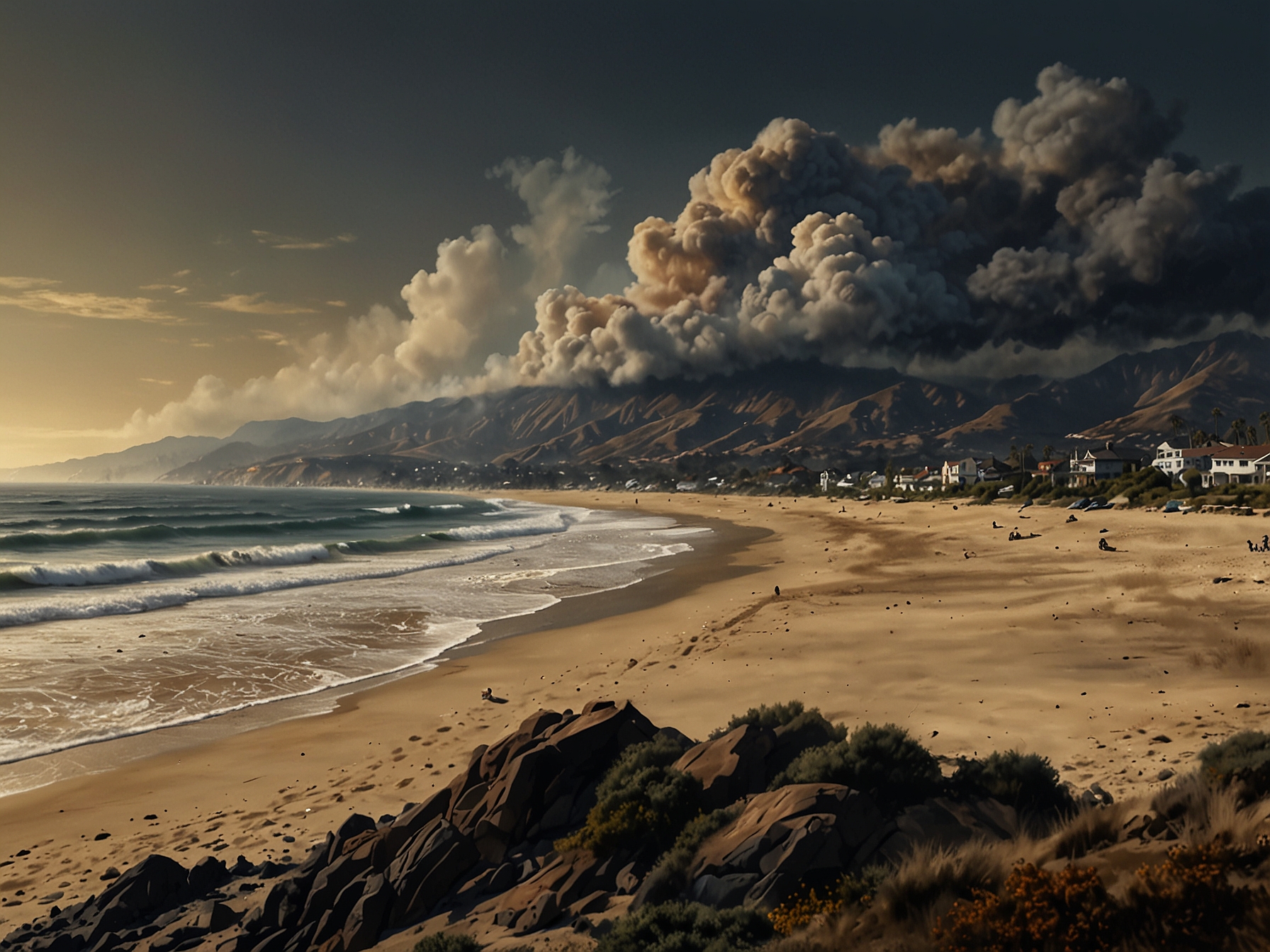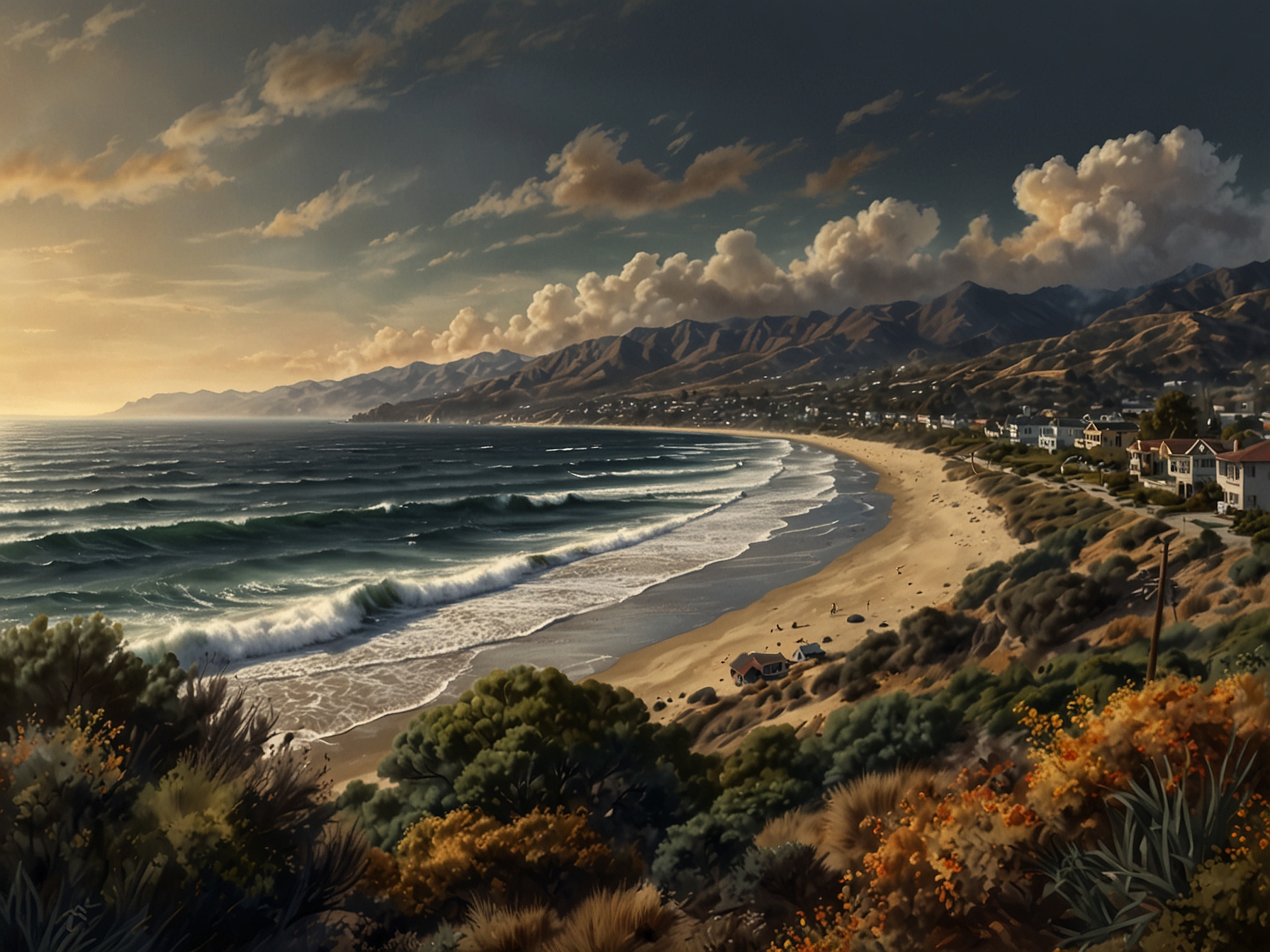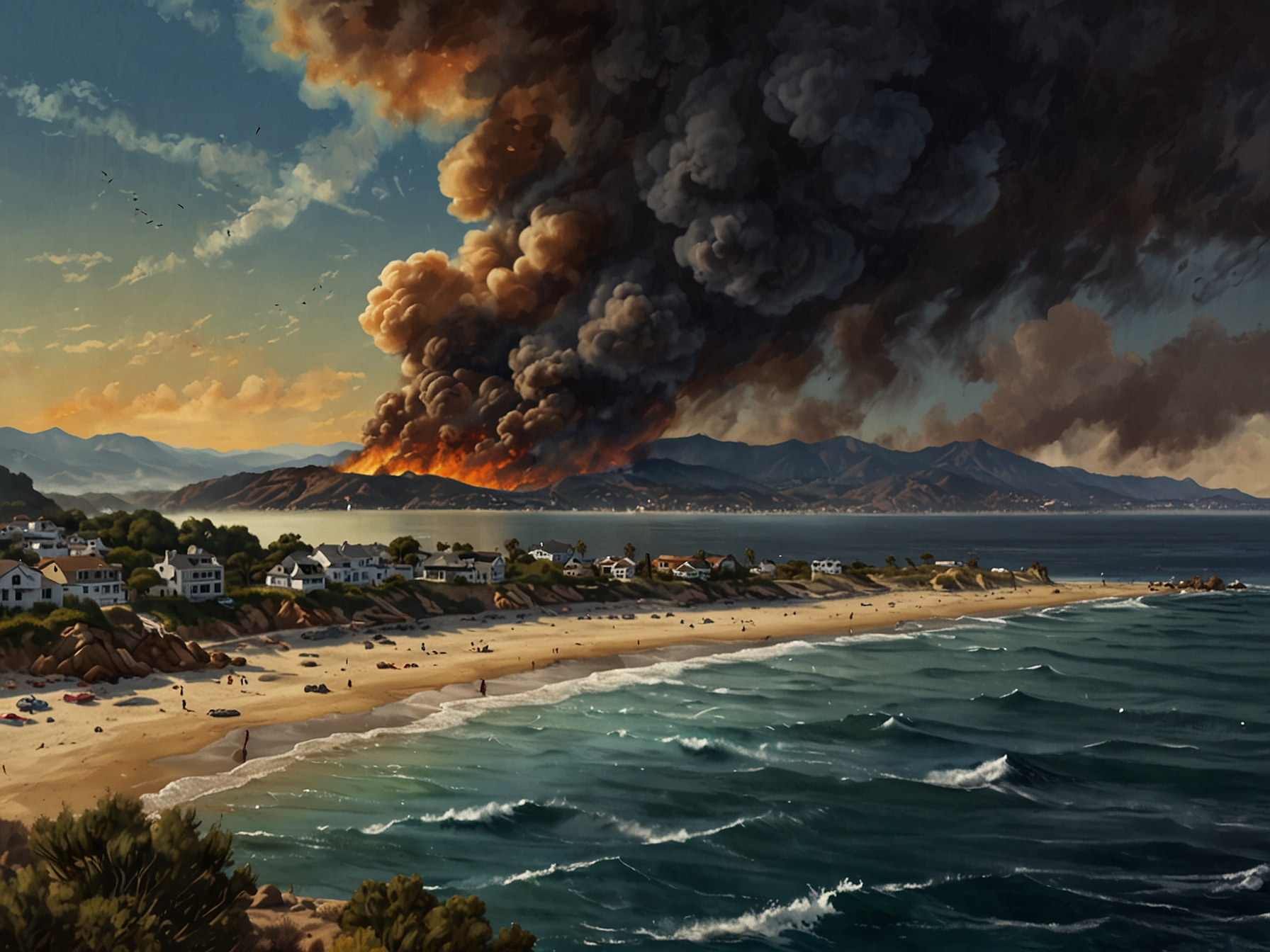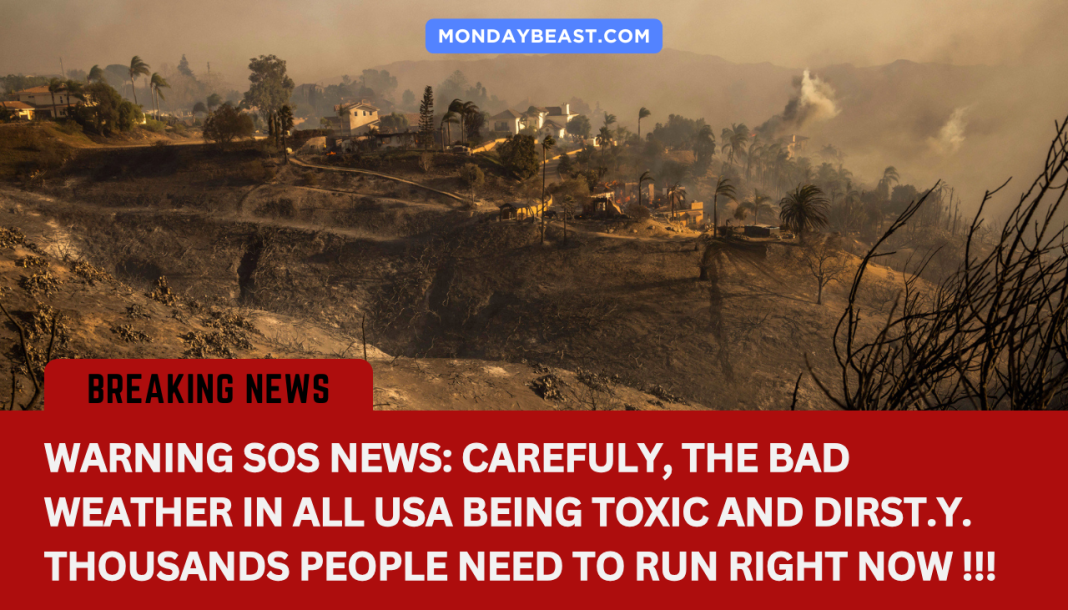The Franklin Fire has exploded in Malibu, threatening homes and lives. As erratic Santa Ana winds whip through the area, the situation becomes dire. This is a reality too many Californians know all too well. Firefighters race against time to save a community steeped in celebrity culture.

For residents of Malibu, each crackle of fire brings a deep-seated fear. The rolling hills, once a picturesque refuge, have become a battleground. It’s not just a fight against flames; it’s a struggle for safety and survival. As evacuation orders go into effect, many families grapple with uncertainty. Will their homes survive the night?
Fire Chief Anthony Marrone confirmed reports of damaged homes and evacuations. His words cast a shadow of concern over a community already on edge. It’s astonishing how quickly a tranquil beach town can turn to a scene reminiscent of an apocalyptic show. With 3,000 acres burned and counting, calm is a fleeting memory.

Why does Southern California continue to face such devastating wildfires? Scientists warn that climate factors play a huge role. The weather conditions draw an eerie parallel to past disasters. After severe rains, a build-up of fuels often leads to explosive fires like the Franklin Fire. This cycle leaves communities in a perpetual state of anxiety.
The damage here has a human toll that goes beyond the immediate. Among residents, famous figures like Dick Van Dyke and Mark Hamill find themselves grappling with the threat. For Van Dyke, it was a harrowing escape with his pets. “We’re praying he’ll be okay,” he shared, revealing raw vulnerability amid chaos. Moments like these make us realize that behind fame exist real fears, real families.

Caught in the blaze’s path, Malibu’s schools are shuttered. For parents, school closures indicate deeper issues than just logistics. It’s also about trust in containment efforts. Young students and their parents are left anxious; what will happen next?
The broader implications of air quality emerge, too. Officials warn that the smoke makes the air treacherous for sensitive groups. As winds spread harmful particles, the health of residents becomes a priority. Many cannot help but wonder—will staying indoors truly protect them?
Amid all this uncertainty, Governor Newsom announced federal aid for the dire situation. Support is crucial, yet the emotional scars of fire linger. Will this aid truly be enough to restore a sense of security? The urgency calls for not just a response, but a long-term solution to prevent such disasters.
In this world of unpredictability, we are reminded of our shared humanity. Whether a celebrity or a local, everyone is at risk. These winds and flames challenge us to rethink our norms about home and safety. Could it be time to reconnect with nature rather than flee from it?
As the flames blaze on, residents face daunting choices. Have they prepared sufficiently for future fire seasons? Each fire season sheds light on the necessity of community resilience and individual responsibility. The Franklin Fire isn’t just another headline; it beckons the question: how can we do better?
Through it all, a vibrant community remains in Malibu—resilient, brave, and determined. Residents band together to face possible losses. Stories of kindness and support emerge amidst the flames, and this spirit promises hope. Ultimately, the Franklin Fire encapsulates both tragedy and inspiration. What can we learn from Malibu’s struggles to share with other high-risk areas? Let’s engage with these communities and learn together. The future is unpredictable, but through strength and unity, we can find light, even in the darkest of times.




